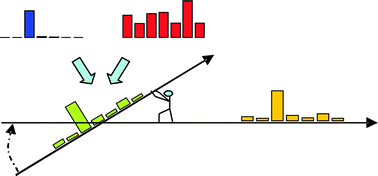Isotope pattern deconvolution for internal mass bias correction in the characterisation of isotopically enriched spikes†
Abstract
Enriched spikes of 53Cr, 57Fe, 67Zn, 95Mo, 111Cd, 143Nd, 150Sm, 199Hg and 207Pb were characterised on a multi-collector ICP-MS instrument both in terms of isotopic composition and concentration. The isotopic composition of the spikes was determined using either a natural abundance or certified standard for mass bias correction, except for lead where thallium internal correction was used. It was observed that the use of weighted regression lines for mass bias correction provided similar or, in most cases, lower uncertainties in the isotopic composition of the spikes in comparison with unweighted regression lines or single ratio measurements. For the establishment of the spike concentration by reverse isotope dilution analysis, isotope pattern deconvolution was evaluated and mass bias could be corrected internally in each blend by minimising the variance of the multiple linear regression model. It was also observed that isotope pattern deconvolution with internal mass bias correction provided lower uncertainties in the concentration of the spikes in comparison with the usual procedure based on external mass bias correction.


 Please wait while we load your content...
Please wait while we load your content...